WD TV Live Plus: Western Digital's Latest Media Player Reviewed
by Cameron Butterfield on July 29, 2010 1:00 AM EST- Posted in
- Home Theater
- Media Streamer
- WD
- WD TV Live Plus
Disassembling the WD TV Plus reveals a passive heatsink design, which is preferred in this class of device since there is no fan noise to distract from the viewing experience. The heatsink found within the unit is comparable to the size of a standard northbridge heatsink found on modern motherboards. The device is well built, the plastic is thick and durable, and the chassis has very little wasted space, which helps it keep a very small footprint. The device also uses metal foil tape to connect the tray to the metal portion of the frame of the device which may also help to distribute some of the heat. Once the heatsink is removed we can see the Sigma Secure Media Processor in the center of the mainboard. Also of note, we see that the unit uses Hynix DDR memory chips, and a RTL8201EL Realtek NIC controller. The Realtek RTL8201EL is a single-chip/single-port Fast Ethernet PHYceiver that is capable of operating at 10/100Mbps, full/half duplex, auto-negotiation and power down modes.
The WD TV Live Plus uses the same clamshell style design that many of their HDD products such as the MyBook line.
Within the plastic casing, a metal tray and cover exist to hold the mainboard
The heatsink and mainboard
The back end of the mainboard.
The processor and memory chips uncovered.
The WD TV Live Plus has a Sigma Media Processor, a chip designed for IPTV, cable, thin clients and media players. This processor architecture is built for low power operation and boasts advanced content protection, digital rights management and a wide list of media format capabilities.
The WDTV Live Plus is almost identical to the WDTV Live, the only apparent difference being the change in processor model number. The Plus version utilizes a Sigma SMP8654 media processor, while the previous WD TV Live version utilizes the SMP8655. Although the SMP8655 has a higher model number, the additional digit actually signifies that it is the Non-Macrovision version. Utilizing the SMP8654 Sigma processor rather than the SMP8655 previously used in the WD TV Live HD is essential for doing the two things that the Plus version of WDTV Live is capable of doing in addition to the features it's predecessor already supported, namely Netflix streaming. We reason that WD had to release the WD TV Live Plus with a new processor because there is no content protection available otherwise for the composite output. This output is analog in nature, and Macrovision is meant for analog output protection. On HDMI, HDCP is more than enough. It is likely that the older WDTV Live HD could have supported Netflix with just a firmware update, but would not have been able to protect the content over composite signals.
Here is a layout of the Sigma Processor architecture followed by a list of features and specifications:
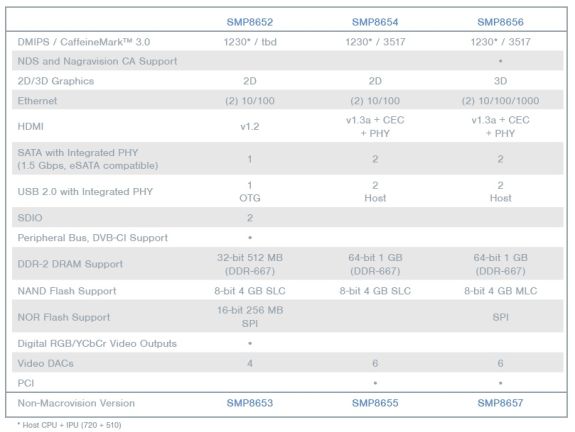
The SMP8654 media processor has 1GB of built in DDR-667, and has interface support beyond the capabilities that it is utilized in WDs implementation. One of those features that would have possibly added value to a device like the WD TV Plus is the SATA IO support. This capability could have possibly been utilized to provide an eSATA interface, allowing further support for Western Digitals HDD products such as the eSATA myDVR expander and other eSATA devices supplied by Western Digital.


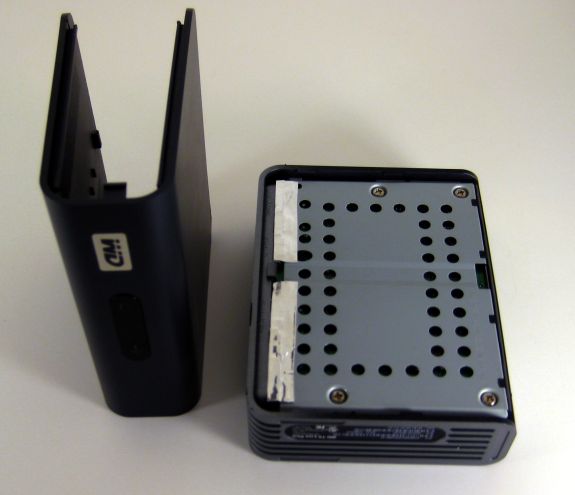
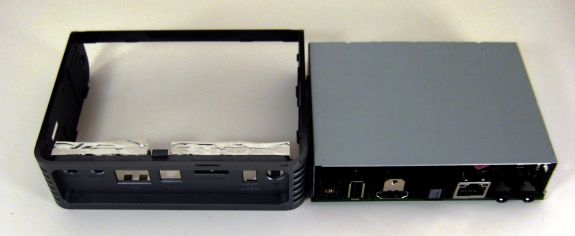
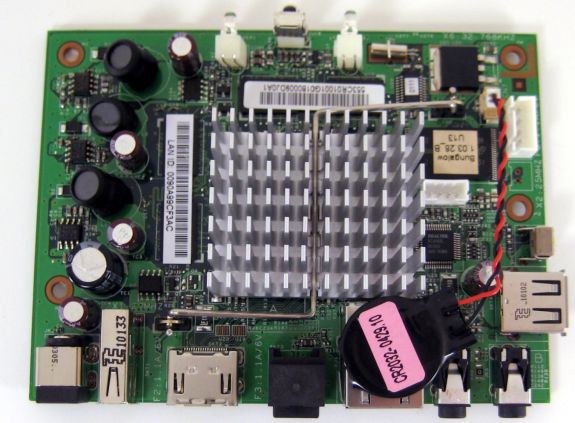
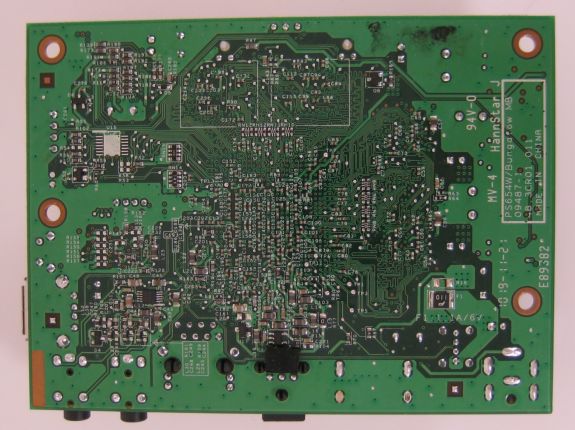
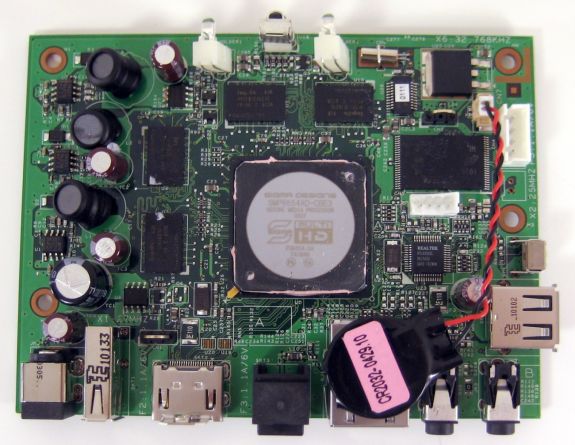
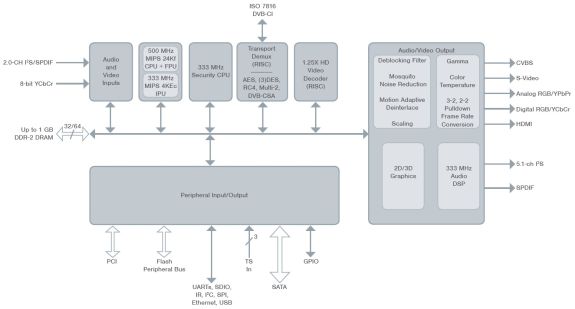








81 Comments
View All Comments
gigahertz20 - Thursday, July 29, 2010 - link
I own a WD TV Live and a Popcorn Hour A-110, both are pretty good but the Popcorn Hour has played back everything fine whereas the WD TV Live has refused to play back certain media, mostly movies with dual audio tracks. I have to use MP4Muxer to delete one of the the audio tracks, after that it will play back fine.If I do upgrade/buy another media player in the future, it will probably be another Popcorn Hour, but I want to wait since I don't like their current line of players. I've read reviews on the newer Popcorn Hour A-200 and people complain of fan noise and the casing is just a piece of plastic, not metal like the older A-110 that I have, which is nice since the metal casing acts like a heat sink.
I was looking forward to the Boxee Box despite its ugly form factor, but then I've read that it will only be capable of 10 Mbits/sec 1080p HD decodes. So forget the usual 20 – 30 Mbps H264 rips on the Boxee Box.
It seems like the Boxee box is just a fancy Xbmc box that may play most SD and 720p material, internet streaming channels etc, and a very limited portion of 1080p re-encodes if max bitrates are limited to 10Mbps.
To bad Microsoft and Sony can't make their game consoles true media players that can handle any format, then we wouldn't need to mess around with buying a media player.
sucram03 - Saturday, July 31, 2010 - link
The information you provide is very informative, thanks for that.However, I would remind people not to start comparing the WD TV Live to the WD TV Live Plus. My understanding is that the underlying hardware components that decode are the same, except for the added chip that allows for Netflix viewing. However, this appears to not be the case.
I've had multiple anime shows with dual (and triple)-audio (in MKV containers) play perfectly fine with this WDTV Live Plus. Also, I'm waiting for a hopeful release of B.rad's firmware which is only good for the WD TV & WD TV Live at the moment. This would allow for moviesheet display with a nice looking interface and library over a network share, which is something the WD TV's cannot do (currently they only build a library if the connection is local).
Interesting info on the Boxee box. I had/returned the popbox due to the horrendous firmware and slow GUI response. It was absolutely the worst purchase I've made in years.
I might suggest you look into putting B.rad's firmware on your WDTV Live, and see if that helps any of the issues you had experienced. Of course, YMMV, but most people do seem to like the firmware.
gigahertz20 - Monday, August 2, 2010 - link
Thanks for the info, the problems regarding dual audio tracks has happened in mp4 files. For example the latest one was a movie with the specs below, my WD TV Live just refused to play it.Video Information:
Format: H.264/MPEG-4 AVC
Video Bitrate: 3011
Framerate: 23.97fps
Display aspect ratio: 1.86
Encoder: x264
Resolution: 1280x688
Audio Information:
Format: mp4a: MPEG-4 AAC LC
Audio #1: 384kb/s 48000 Hz 6-channel
Audio #2: 128kb/s 48000 Hz 2-channel
Subs: None
ganeshts - Tuesday, August 3, 2010 - link
gigahertz20,Does this happen with all MP4 files having multiple audio tracks? We have quite a few test files with multiple audio, but unfortunately, none in the MP4 container.
Can you upload a sample for us to check out / add to the test suite?
Thanks
Ganesh
skinsman - Friday, September 3, 2010 - link
I ran across this comment while googling for WDTV Live mp4a problems. I've found there is a definite issue with mp4a multi-channel AAC audio - lots of people report no audio output. Dual audio tracks usually works fine from what I've seen, I don't think that's the issue you're hitting. On the other hand maybe you're seeing a different issue to the usual mp4a one - does your WDTV Live refuse to play the file at all, or are you seeing video but no audio?temporalillusion - Thursday, July 29, 2010 - link
Great article, and look forward to more like this. There's a ton of these things out there and it's hard to know which one is good beyond just looking at the codec list.Do the Popbox next! :D
gigahertz20 - Thursday, July 29, 2010 - link
The Popbox is crap, just look at the reviews on Amazon....ouch, it wasn't ready at all to be put out there for customers. Maybe months from now after a bunch of updated firmwares are issued, it will be decent.http://www.amazon.com/popbox-Syabas-PopBox-Media-P...
temporalillusion - Thursday, July 29, 2010 - link
Ah bummer, that's too bad. Thanks for the info, appreciated.jigglywiggly - Thursday, July 29, 2010 - link
These things are ALL stupid. You can get a new 360 for 150-200$ (arcade obv) AND, just run a tversity media server for all the content your 360 cannot play. Then just sit back, and let the 360 run... it has way way way stronger hardware than any of these things.beginner99 - Thursday, July 29, 2010 - link
yeah lol what formats cann the xbox 360play? xvid, avi? that's about. Any content worth watching on a large tv in most cases aint gonna be any of these. Unoffical standard is mkv (h.264, dts or AC3). transcoding will always lower quality. Can the xbox360 play 1080p? I doubt it.